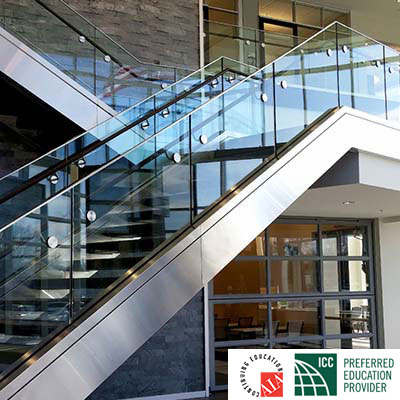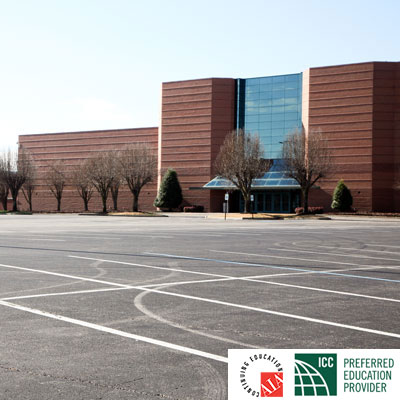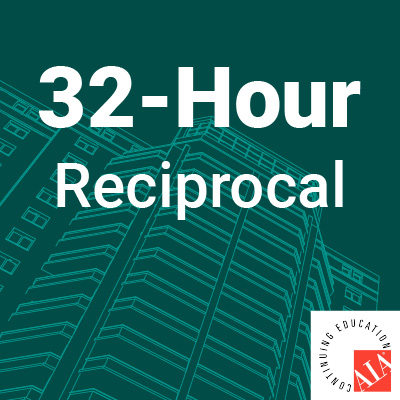Description
This 3 Credit package contains:
Course #1 – (7 hour Audio Course) Manage Your Way to Big Profits | #AIABLTI334.21
Course #2 – (7 hour Video Course) 2010 ADA Standards: Key Features and Elements | #AIABLTI325.20
Course #3 – (6 hour Video Course) Lead Paint Awareness | #AIABLTI333.24
Course #4 – (3 hour Audio Course) Getting Decked: And Choosing How That Happens | #AIABLTI451.24
Course #5 – (3 hour Audio Course) Danger in the Damp – Dealing with Mold | #AIABLTI454.22
Course #6 – (2 hour Audio Course) ADA Paths – Part 1 No One Left Behind | #AIABLTI511.23
Course #7 – (2 hour Audio Course) ADA Paths – Part 3 Communication and Recreation | #AIABLTI513.23
Manage Your Way to Big Profits
Instructor: Paul Acker
This course is designed to be the next step in raising your construction management skills to the next level. The class will help prepare the learner for the scope of responsibilities that a professional construction project manager, whether for residential or commercial projects, must be prepared to perform. The course begins with preconstruction services and project start-up tasks. As the project continues, controlling the finances, overseeing the project progress, safety, environmental and energy concerns are just a few of the many tasks a project manager must supervise. Finally, a successful manager must properly close out the project, all while achieving a profit, and securing a satisfied customer.
Upon completion of this course, participants will:
- Be able to assemble a project team, ensuring they are qualified to perform the work in accordance with specifications and requirements.
- Recognize the role of OSHA in the workplace and describe the causes of the most common workplace injuries.
- Understand environmental regulations that govern construction activities for protecting water, air and land quality.
- Develop a close out procedure that will verify accuracy and completion of all building component systems, including warranties and certifications, prior to issuance of a Certificate of Occupancy.
This Course Covers:
- Planning and startup
- Project progress
- Environmental and energy concerns
- Safety
- Close out
2010 ADA Standards: Key Features and Elements
Instructor: Roger Peck
The ADA is one of America’s most comprehensive pieces of civil rights legislation that prohibits discrimination and guarantees that people with disabilities have the same opportunities as everyone else to participate in the mainstream of American life, to enjoy employment opportunities, to purchase goods and services, and to participate in State and local government programs and services. The 2010 Standards set minimum requirements, both scoping and technical, for newly designed and constructed, or altered State and local government facilities, public accommodations, and commercial facilities to be readily accessible to and usable by individuals with disabilities.
This video course covers the fourth through tenth chapters of the 2010 ADA Standards for Accessible Design. The material for this course is presented by simple narration and power point video presentation, including on-site, real world video examples in various accessible buildings used by both the public and private sector.
After completing this course participants will be able to:
- Be able recognize what exterior and interior components can and should comply with ADA standards.
- Outline at least one design strategy based on ADA standards for the construction of either a public or private building.
- Identify requirements for proper maneuvering space, clearance and accessible routes.
- Summarize the options available to the design or building professional when designing a facility per the requirements of the ADA Standards.
This course covers:
- Accessible Routes
- General Site & Building Elements
- Plumbing Elements and Facilities
- Communication Elements and Features
- Special Rooms, Spaces and Elements
- Built-In Elements
- Recreational Facilities
Lead Paint Awareness
Instructor: Scott Corbat
Traditional renovation work can create significant dust-lead hazards if lead-based paint is disturbed. Contaminated dust generated by traditional renovation work can cause lead poisoning in children, pregnant women, healthy adults, and even pets. Practical changes in work practices can minimize and contain dust. The use of lead-safe work practices makes the job safer and reduces liability exposure. This course will teach you how to perform or supervise lead-safe work practices safely and effectively. This course is not a qualifier for RRP Certification. You must complete an EPA accredited course for Certified Renovator Status.
After completing this course, you will be able to:
- Understand the dangers inherent in lead paint, including the risks and difficulties involved in renovation projects that involve older structures.
- Summarize the EPA and HUD rules required of Certified Firms and Certified Renovators.
- Determine if lead-based paint affects your work, and how to educate owners and residents in target housing, or owners and adult representatives in child-occupied facilities about how the work will affect lead in their property, and how to plan the work so that it is lead safe.
- Outline the process of proper set up so that dust and debris created by the work do not contaminate the property and leave behind lead contaminated dust.
- Describe how to effectively clean up dust generated by the work performed in the home or child- occupied facility; how Certified Renovators conduct a cleaning verification; and how to dispose of renovation waste.
This course covers:
- Lead Paint Concerns
- Regulation
- Before Beginning Work
- Containing Dust
- During the Work
- Cleaning and Checking Your Work
- Recordkeeping
- Training
Getting Decked: And Choosing How That Happens
Instructor: Paul Spite
Despite our need for shelter from elements, we have always sought opportunity to get back into or close to nature. A large part of our effort to reunite with nature has revolved around creating outdoor spaces adjoining our houses. There, we can get outside to enjoy favorable climate conditions, at whatever time we choose.
These outdoor spaces go by many names and have manifested as lanais, porches, screened enclosures, patios, etc. The most common outdoor spaces, constructed and attached to homes in western cultures, are outdoor decks, balconies and patios. For the purposes of this course, we will explore options available to build decks, balconies, and structures that are usually supported at some point above grade.
After completing this course participants will be able to:
- The evolving use of different materials to construct safe and usable outdoor surfaces
- Strengths and weaknesses of each available outdoor surface option
- New surfacing options that have been developed to overcome decking material limitations
- How surfacing materials are being combined to minimize weaknesses and maximize strengths
- Decking / Balconies made of wood, man-made materials, aluminum, concrete and Porcelain?
Danger in the Damp – Dealing with Mold
Instructor: Paul Spite
Despite our best efforts to keep it out, water has found its way inside the building. This course examines the question of what to do next, since abandoning the building to its eventual collapse is not usually an option.
The material briefly examines design and construction methods of systems designed to withstand water penetration. An understanding of these systems gives us a starting point in finding sources of intrusion, and a starting point for how to best repair them and prevent further damage. Sealing a failed envelope is the first step in remediation. Otherwise, the appearance of mold will likely be the next step in rendering our damaged buildings uninhabitable.
Once the source of the problem has been addressed, steps can be taken to reclaim full use of the built environment. Assessment of moisture damage must be done next to best determine and prioritize steps toward repair or replacement of damaged components. Immediate and critical remedies are examined, as well as those which can be addressed after a couple days have passed. Lastly, any resulting mold growth must be eliminated, and steps taken to prevent its recurrence.
Because of its power and the many ways water finds to enter our buildings, water intrusion with accompanying mold growth is one of the most discouraging building maintenance issues to address. But we have enough accumulated experience from past battles to handle it far better moving forward.
This course is intended to equip others with that knowledge.
This course teaches the following specific knowledge and skills:
- Terminology used to discuss how entrapped water creates problems for building users
- Measures to retard the infiltration of moisture into built environments
- Where and why mold growth occurs
- Testing and inspection to find water damage
- Systems and procedures to inventory moisture damage following intrusion
- Immediate and secondary actions steps to take following water intrusion
- Indoor air quality issues and how to identify them
- How to deal with mold growth, once it is discovered
This course covers:
- Overview of Moisture Related Problems
- Moisture Damage to Buildings
- Before Damage Occurs
- Solutions to Water Penetration Issues
- Maintaining Building Systems as Lines of Defense
- Dealing with Building Damage from Moisture
- Air Quality Concerns
- Dealing with Mold in the Airstream
ADA Paths – Part 1 No One Left Behind
Instructor: Paul Spite
In September of 2010, the U.S. Department of Justice published the “2010 ADA Standards for Accessible Design,” a comprehensive set of standards about designing buildings to facilitate their use by the handicapped. The publication contained two parts, one establishing accessibility laws for facilities built with public funds, and one providing guidelines for public buildings built by private entities. Since that time, numerous model codes, building codes and published standards have been released, based in part or in whole on those standards, creating some confusion as to what exactly is required. This course is a comprehensive overview of the original guidelines and their intent.
The “2010 ADA Standards for Accessible Design,” though quite lengthy, have been broken out and grouped into nine categories of information, presented in the following sequence. A series introduction discusses the creation of the standards and their applicability as regulations. This course then focuses on the additional parts of the standards addressing; accessible parking facilities and accessible building entryways.
An attempt was made to simplify these regulations and present them in an orderly and comprehensible fashion. Hopefully, the resulting information will be of use in designing public accommodations and commercial facilities, making them readily accessible to, and usable by, individuals with disabilities.
This course teaches the following specific knowledge and skills:
- An understanding of the difference between accessibility laws mandated for buildings constructed using governmental funds, accessibility guidelines for buildings built by private entities for public use, and practical exceptions to both
- Design principles to ensure parking facilities accommodate use by the handicapped
- An overview of the importance of providing accessible routes between parking facilities and building points of entry
- Materials and methods to construct walking surfaces allowing easy passage and use by the handicapped, including stairs and ramps.
- An overview of design principles resulting in making vertical transportation equipment, like lifts and elevators, of better use to the handicapped
- Maneuvering clearances needed at, and between, doors and gates
This Course Covers:
- Compliance Dates
- Scope of Coverage
- Exceptions
- Requirements Pertaining to Specific Building Types
- Additional Exemptions
- Parking Space Requirements
- Location of Parking Facilities
- Physical Characteristics of Parking Facilities
- Accessible Routes
- Entrances
- Doors, Doorways and Gates
- Elevators and Lifts
- Security Barriers
- Accessible Means of Egress
- Accessible Routes
- Stairways
- Case Study
- General Provisions
- Doors, Doorways, and Gates
ADA Paths – Part 3 Communication and Recreation
Instructor: Paul Spite
In September of 2010, the U.S. Department of Justice published the “2010 ADA Standards for Accessible Design,” a comprehensive set of standards about designing buildings to facilitate their use by the handicapped. The publication contained two parts, one establishing accessibility laws for facilities built with public funds, and one providing guidelines for public buildings built by private entities. Since that time, numerous model codes, building codes and published standards have been released, based in part or in whole on those standards, creating some confusion as to what exactly is required. This course is a comprehensive overview of the original guidelines and their intent.
The “2010 ADA Standards for Accessible Design,” though quite lengthy, have been broken out and grouped into nine categories of information, presented in the following sequence. A short series introduction discusses the creation of the standards and their applicability as regulations. This course then focuses on the additional parts of the standards addressing; communication features for the disabled, consideration of finishes to use with mobility aids and recreational facilities to provide continued enjoyment by the handicapped.
An attempt was made to simplify these regulations and present them in an orderly and comprehensible fashion. Hopefully, the resulting information will be of use in designing public accommodations and commercial facilities, making them readily accessible to, and usable by, individuals with disabilities.
This course teaches the following specific knowledge and skills:
- Features and functions of alarm and notification systems in facilities designed to be accessible and usable by disabled occupants of all descriptions.
- Characteristics and defining features of visual, Braille, pictograms and tactile characters, ensuring that signage in accessible locations is legible to, and usable for, all occupants
- Consideration of flooring surfaces and finishes, including allowable changes in level, to ensure smooth passage over them
- Features of various facilities designed for recreation, so as to make continued enjoyment possible for the disabled.
This Course Covers:
-
- Communication Features in General
- Notifications
- Signage
- Accessible Telephones
- Transportation Facilities
- Assistive Listening Systems
- Accessible Automatic Teller and Fare Machines
- Accessible Two-Way Communication Systems
- Surfacing Materials
- Furniture
- Recreational Opportunities
- Accessible Amusement Rides
- Accessible Recreational Boating Facilities
- Accessible Fishing Piers and Platforms
- Accessible Exercise Machines and Equipment
- Accessible Golf Facilities
- Accessible Miniature Golf Facilities
- Play Areas
- Accessible Swimming Pools, Wading Pools, and Spas
- Accessible Shooting Facilities with Firing Positions



